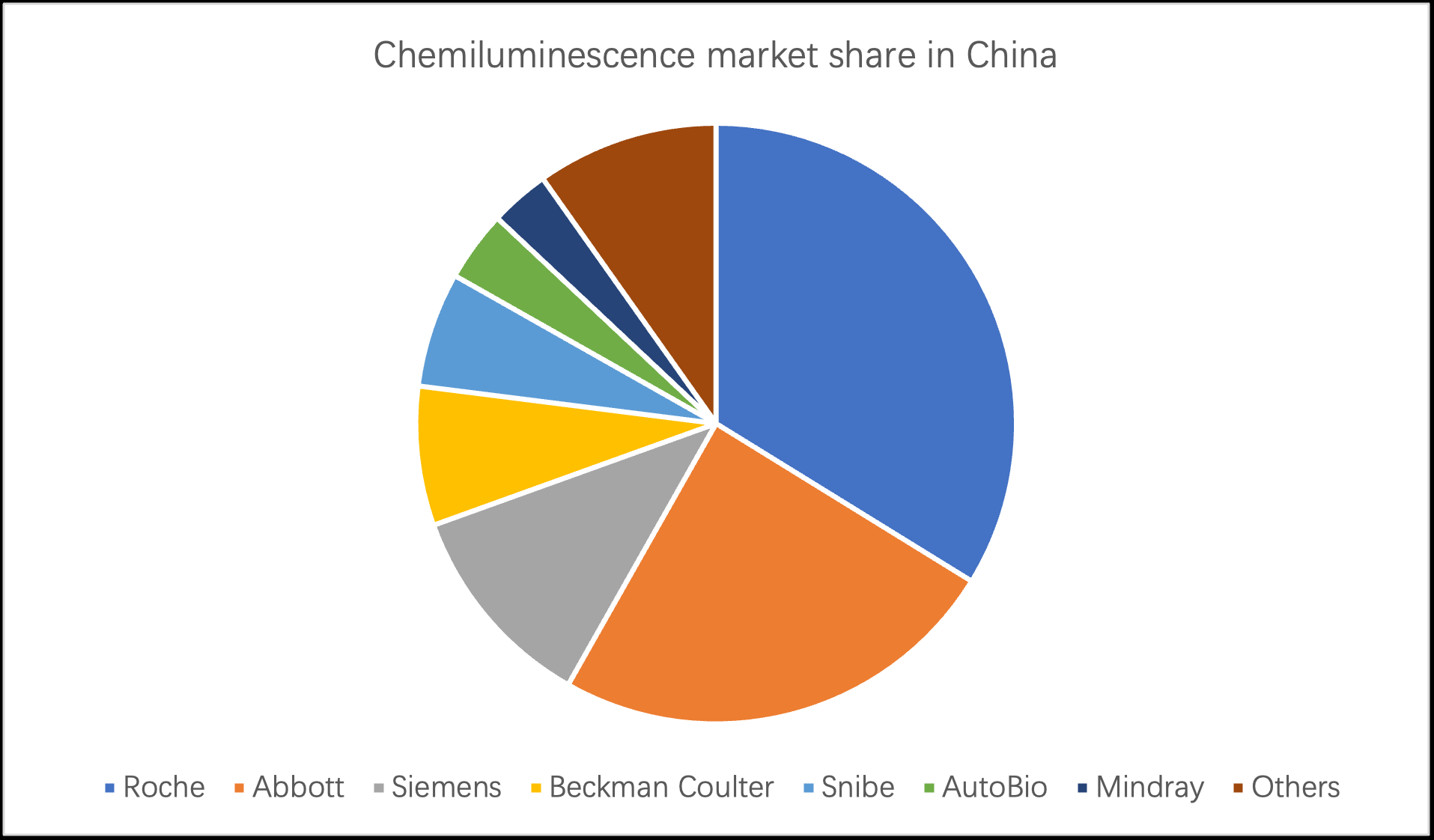Original from: DJyanbao
Chemiluminescence immunoassay is a kind of immunodiagnosis, which combines the highly sensitive chemiluminescence assay technology with the highly specific immune reaction for the detection and analysis of various antigens, semi-antigens, antibodies, hormones, enzymes, fatty acids, vitamins and drugs, etc. It has the characteristics of no radioactive contamination, automation, high sensitivity and high specificity, and is widely used for clinical diagnostics of almost all immunodiagnostic items such as hormones, tumor markers, therapeutic drug concentration monitoring, screening for infectious diseases, prenatal screening for birth defects and cytokines.
Chemiluminescent immunoassay consists of an immunoreactive system and a chemiluminescent analysis system. It started in the early 1980s and developed rapidly in the 1990s, and is one of the latest immunoassay techniques developed after radioluminescence, enzyme immunoassay, fluorescence immunoassay and time-resolved fluorescence immunoassay. Nowadays, it has become the most important routine immunoassay technique. According to different luminescence methods, chemiluminescence immunoassays can be further divided into direct chemiluminescence, enzymatic chemiluminescence, electrochemiluminescence and luminescence oxygen pathway immunoassay.
1. Market Size
In recent years, the market scale of immunodiagnostic reagents in China has been increasing year by year. In 2020, the market size of China's immunodiagnostic reagent industry reached 32.1 billion yuan, an increase of 24.42% year-on-year.


Benefiting from the continuous development of the immunodiagnostic reagent market, China's chemiluminescent immunodiagnostic market has also been well developed. In 2020, China's chemiluminescence market size increased to 28.44 billion yuan. It is expected that the size of China's chemiluminescence market will be at 32.79 billion yuan in 2021, and this size will reach 63.26 billion yuan by 2025.
The relevant statistics show that from January to June 2021, the number of approved tests of overseas in vitro diagnostic companies, such as Roche and Siemens Healthineers, was around 100, and the Chinese brand Snibe reached 141.


2. Market Competition
China's chemiluminescence immunodiagnosis market started late, there is a big gap with overseas brands and domestic companies in terms of technology accumulation and market development. The domestic products only account for 24% of the market share.
At present, China's chemiluminescent immunodiagnostic market is still dominated by imports, with multinational leaders such as Roche, Abbott and Siemens Healthineers occupying the main market. The market share of Roche is far ahead, with 33% of the market share.


Meanwhile, China's chemiluminescent immunodiagnostic companies have been catching up in recent years. At present, the diagnostic equipment and reagents of some Chinese enterprises have reached or approached the level of imported brands in terms of test results, test speed and instrument throughput, and have the ability to compete with imported brands.
The leading domestic chemiluminescence immunodiagnostic companies include Snibe, AutoBio, Mindray, Maccura and YHLO. However, since the market share of a single company is not high, companies with core technology, high quality products and strong channel capability still have a lot of opportunities in this field.
3. Market Development Prospects
With the deepening of China's aging population and accelerated economic development, the market demand for immunodiagnosis will further expand, driving the further development of the immunodiagnosis industry especially chemiluminescence diagnosis.
In addition, with the government's increasing investment in medical facilities, chemiluminescent diagnostic technology is expected to achieve the basic replacement of enzyme-linked immunoassay and other technologies.

Copyright © 2025 GL events Ruihe (Shanghai) Exhibition Co., Ltd. All Rights Reserved. ( 沪ICP备12004745号-1 )

We deliver the latest IVD news straight to your inbox. Stay in touch with CACLP News.
sign-up for our newsletter today.



To ensure our newsletter hit your inbox, make sure to add @caclp.com to your safe senders list. And, as always, feel free to contact
us with any questions and thanks again for subscribing.
 Go back
Go back
